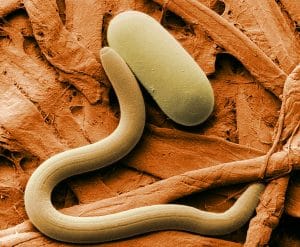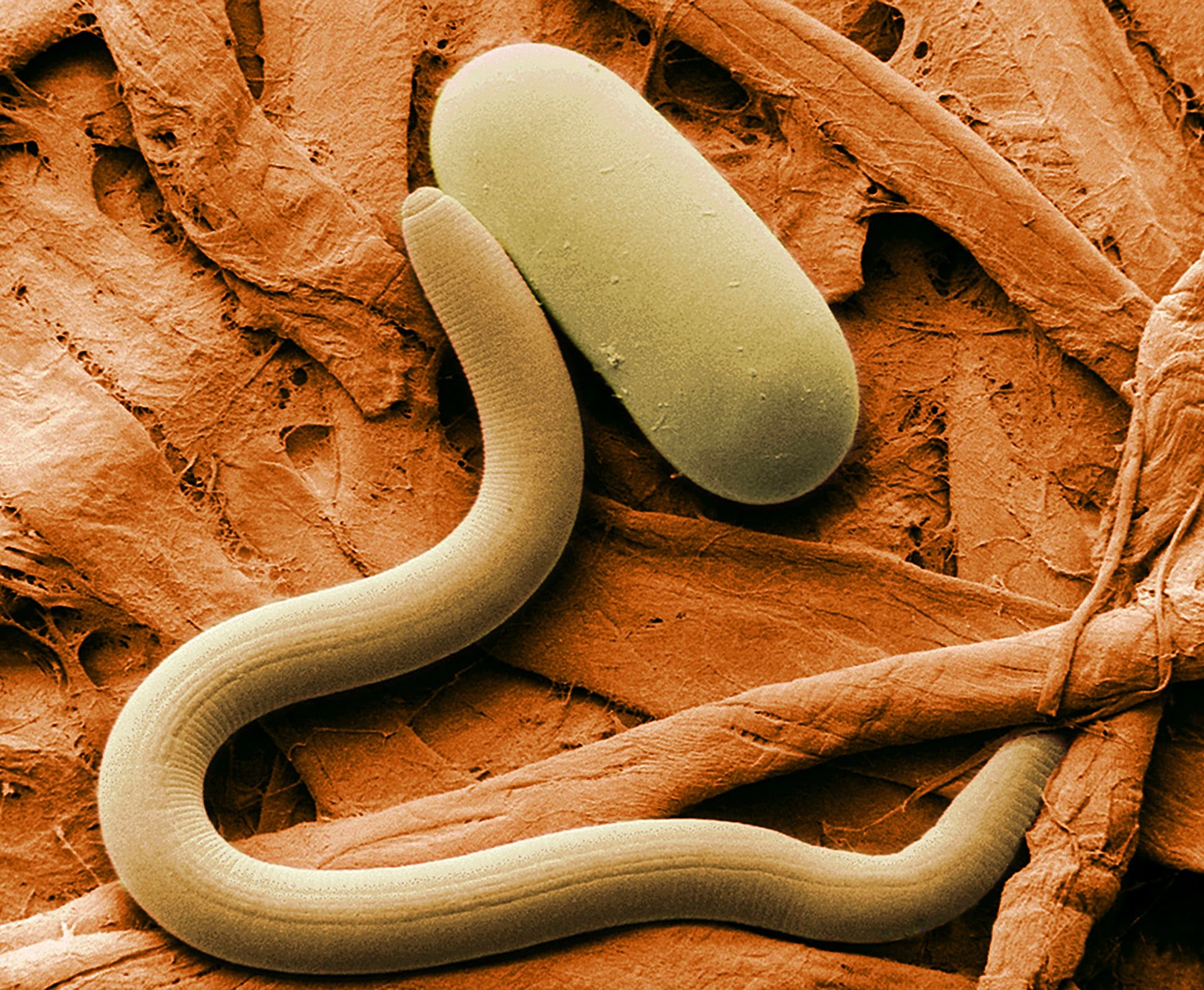Will pesticides kill beneficial nematodes?
Nematodes are living creatures and exposure to toxic pesticides can render them useless. Environmental factors such as temperature and oxygen can also contribute to reducing nematodes population.
However, in a controlled environment where the temperature levels are average and the oxygen is available, there are some pesticides that are more harmful to nematodes than others.

Beneficial nematodes play an essential role in plant development. They are responsible for creating balance in the soil. Also known as ‘good bugs’, nematodes are an excellent pest mitigation strategy because they do feed on them from the inside.
Mixing pesticides with nematodes is an effective way to get rid of pests.
However, it’s always good to identify what organisms pose a threat to your plants and those that don’t. In this case, beneficial nematodes do not pose a threat to your plants.
We will explain that further in the article. And using some pesticides can kill beneficial nematodes. The ingredients found in the pesticide you intend to use matters a lot.
Most natural pesticides, unlike synthetic ones, are least harmful to nematodes.
What Pesticides Kill Nematodes?
Fortunately for you, there is no need to experiment because it has already been done for you. Below we will take a look at some of the most popular pesticides and see what effect they have on nematodes.
From research done by ONFLORICULTURE, pesticides such as Orthene, BotaniGard, Talstar, and Avid have the highest nematode mortality rate, with Avid being at the top of the chart.
The likes of water and pedestal have a low nematode mortality rate, therefore can be mixed with nematodes to kill pests.
Brand Active Ingredient
-
- Adventure 0.5% GR Abamectin
- Farmchance 250EC Fosthiazate
- Alonze 50EC Abamectin
- PicClor-60 60% Chloropicrin
- Telone II 1,3 Dichloropropene
- Dominus Allyl Isothiocyanate
- Vapam Metam Sodium
- Paladin Dimethyl Sulfide
- Movento Spirotetramat
- Salibro Fluazaindolizine
- Vydate Omaxyl
Can You Mix Nematodes and Pesticides?
Many professionals in the agricultural sector have described the mixture of pesticides and nematodes as the ‘perfect’ pest killer. There are some insecticides that can increase the effectiveness of nematodes in mitigating a pest infestation.
As mentioned earlier, not all pesticides are safe for nematodes. Some are too toxic and hinder the survival of nematodes. When you mix the two, they perform synergistically. Implying that the pesticides act as a sidekick of nematodes in getting rid of pests in your garden.
Nematodes, the microscopic worms are found in huge numbers in the soil. Over the years, nematodes have assisted farmers in getting rid of agricultural pests. Nematodes are used to get rid of pests from different types of plants.
When you mix them with pesticides, you can be assured of having the best pest control measure.
Additionally, some nematodes are tolerant of short exposure to some insecticides. Therefore, knowing which pesticides to mix with nematodes is very essential, if you are interested in achieving better results.
Mixing pesticides and nematodes does have its perks. Not only is it a cost-effective measure of mitigating pest infestation but it is a very safe option.
But, What are Beneficial Nematodes?
We have talked so much about mixing nematodes with pesticides and achieving the best pest killer. But, what are beneficial nematodes? These are microscopic and non-segmented roundworms that occur naturally in the soil.
What makes nematodes so beneficial is what’s found inside the gut. The bacteria found there can kill an insect within two days after it has been ingested. Beneficial nematodes mostly enter insects and pests via their anus, mouth or anus.
After that, they then release the bacteria inside the pest and multiplying leading to complete eradication.
How to Apply Beneficial Nematodes?
When it comes to applying beneficial nematodes, there are lots of equipment you can use. They include a horse end sprayer, a watering can or a pump sprayer if you have installed an irrigation system. Once you have the right set of equipment, what follows is mixing the nematodes gently into the water.
Here is a video that shows how to apply beneficial nematodes:
Note that, the application ought to be done when the sun sets because nematodes are photophobic. And, to ensure that your mixture is balanced, you can use a certain amount of food color that is equivalent to the number of nematodes.
Therefore, you will be able to see the dilution level of nematodes in the mixture.
Some tips to help you successfully apply nematodes on your garden include; using a sufficient amount of nematodes, buying fresh and living nematodes, applying when there is no direct sunlight and finding the best nematode species suited for your pest problem.
What Do Beneficial Nematodes Kill?
Though harmless to humans and plants, beneficial nematodes are very dangerous for insects and pests. The bacteria found in their guts is capable of killing lots of pests such as weevils, cutworms, white grubs, and clearwing borers. Other than infecting insects with bacteria, nematodes can attack the host and parasitize it.
If you prefer using nematodes to get rid of pests, it is advisable that you get the right species. This is because there are different kinds of nematodes and each affect plants differently. Also, after application ensure that the soil is warm and the weather is humid.
What Do Nematodes Eat?
Nematodes are a carnivorous type of organism. They feed on insects, small animals, and even other nematodes. They also feed on fungi, diatoms, and algae.
Beneficial nematodes are the ones that feed on insects and pests. However, there are other types of nematodes that feed on plant roots. These are the kind you should avoid at all times because they can damage your plants instead of protecting them from harm.
Other nematodes also feed on dead organic material such as decomposing animals and plants. It is in such instances where the nematodes feed on bacteria on decaying organisms. When they get into insects, they can stay there as parasites. And this is the mechanism used when dealing with a pest infestation.
Does Triazicide Kill Nematodes?
Triazicide falls under the group of nematicides which are pesticides used to kill nematodes. It is a broad-spectrum insecticide that can kill most living organisms it comes into contact with. Therefore, if you were considering mixing Triazicide with nematodes and applying it in your garden, then you might want to reconsider your decision.
The chemical properties of Triazicide make it toxic to nematodes because possesses high volatility. Also, Triazicide isn’t the only pesticide that kills nematodes. Another example is the carbamate.
Does Imidacloprid Kill Nematodes?
When dealing with pests such as white grub, Imidacloprid has proven to be one of the most effective pesticides to help you get rid of it. It works wonders when mixed with nematodes. Basically, Imidacloprid doesn’t kill nematodes. As a matter of fact, it makes it easier for nematodes to penetrate the hosts.
For instance, the likes of white grubs which have developed a physiological barrier that prevents nematodes from penetrating them. You can use Imidacloprid to interfere with the white grub’s nerve function thus breaking lowering its defense mechanism. This makes it easy for the nematodes to get inside and start the parasitic cycle.
How Long Do Nematodes Live in the Ground?
In this case, beneficial nematodes can live in the soil for a period of 18 to 24 months. This heavily depends on the nature of the soil. They can survive for long if the soil temperature does not exceed 32 ˚F.
Nematodes can also survive during winter, as long as you apply it before the soil freezes. These organisms can travel for some distance. They can, therefore, avoid the freezing temperatures of the topsoil during winter.
How Long Will It Take for You to See Results?
When you apply nematodes to your garden, they start acting right away. You will start noticing the effects within the first week after application. Maximum effects begin to show after 14 days. Kindly note that you won’t be able to see dead pests lying around. It’s because nematodes decompose pests from the inside out.
Something else that you should put into consideration is knowing when to apply them. They should be used when larvae are present. This mostly happens during autumn or spring. This is the best time for you to apply nematodes. Experts recommend that you apply nematodes annually. However, if you are dealing with a massive pest infestation, you can apply them frequently.
You can get nematodes online. And you should research what are the best nematodes for the pests that are affecting your plants. For instance, if you have an ant problem, you should apply the nematode Steinernema. When dealing with slugs, the nematode Phasmarhabditis hermaphrodita. Also, confirm that the nematode you are using won’t destroy your pants.
Final Thoughts
From the above, we can conclude that there are some pesticides that can kill nematodes. The problem with using such is that they create an imbalance in the soil. Nematodes are a safe option for killing pests. It’s also quite cost-effective. However, not all nematodes are ideal for dealing with pesticides.
Some can even feed on your plants. Only use beneficial nematodes that will attack and kill pests in the ground. You can also mix these beneficial nematodes with pesticides to accelerate their effectiveness.
As an informed gardener, you should be mindful of what pesticides you use. Having nematodes in the soil will keep your plants healthy.
